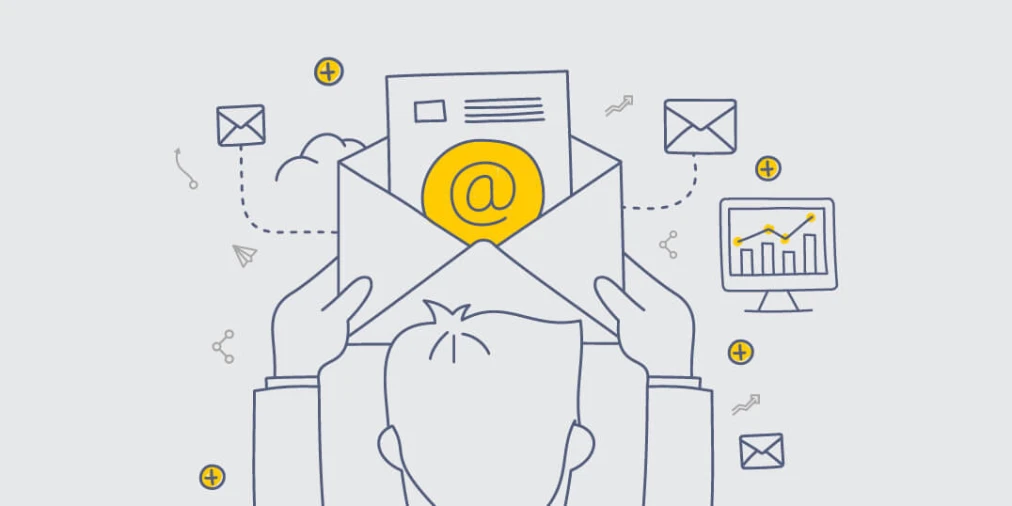By now, you should be starting to realise the potential of email marketing. However, in case you’re still in doubt, here’s 8 killer reasons to put your trust in an email marketing campaign…
Keeping things on target
Email marketing allows your brand to target a specific demographic, meaning you’ll have full control over who sees what (think location-specific offers, as an example). Identifying what type of people are receiving your email campaigns will enable you to separate your recipients into groups and target people with more relevant content. Remember, increased relevance means increased value for your target audience, the by-product of which is greater brand loyalty.
Preaching to the converted
Don’t see this as a bad thing – in fact, it’s quite the opposite. People who sign up to receive your brand’s emails are already interested and therefore much more likely to entertain what it is you’re talking about. Whether your brand is e-commerce or not, email subscribers are much more likely to impulse buy (Brits are estimated to spend more than £3bn monthly on impulse purchases alone), which is why you’ll often see the deployment of tactical marketing methods within email campaigns, such as exclusive offers and easily-visible links to specific products and services.
A branded solution
Say it loud, say it proud: email marketing is the perfect way to extend your branding and create a memorable digital impact. An unforgettable email campaign is great for your brand’s identity (even a well written subject line will stick in a reader’s mind throughout their day). Credibility and consistency are two hallmarks of an unshakeable brand – establishing both via email marketing can set you on the road to success.
Shareability
The days of emails going viral are generally on the wane. However, the most important touchpoint in a piece of email software is still the ‘forward’ button. You should be looking to maximise shareability wherever possible – it’s free advertising, after all! An effective email campaign will be shared, shared and shared again, so get incorporating those social media buttons and including content that can be passed on to recipients’ friends and families (the obvious choice here would be some tempting promotional offers). The more people out there hitting the forward button, the more your subscriber and order numbers should start to hit new horizons.
A measured approach
Make no mistake, data is beautiful. Being able to measure the success of each campaign and tweak things going forward is just another reason to love email marketing. Once again, the end goal is increased relevance for the recipient (which, you guessed it, leads to increased custom). A data-driven campaign is a justifiable campaign – click-through stats, open rates, a spike in subscribers within a certain timeframe… each statistic offers insight into your audience’s habits, a goldmine of information which allows you to vindicate every success and learn from every failure.
Check out our previous blog post on the relationship between data and creativity
Right on time
Perhaps the most obvious benefit of email marketing (and email in general) is that it’s instant – but it doesn’t have to be. Using scheduling tools, we can automate the whole process. This not only lightens your workload, but it also enables you to create campaigns which target particular dates, times and occasions throughout the year. Great for Christmas promotions, for example, but double great for focusing on specific audience demographics.
To elaborate, cast your mind back to the previous point, which highlights the importance of using data to make informed decisions. If we can see from analytics tools that open rates for over 50s are highest around 9am on a Sunday morning, for instance, we can schedule the latest campaign to send at 8.45am on Sundays. Sure enough, our hot-off-the-press email will be sitting pretty at the top of inboxes, ready and waiting for when our audience logs on. It may seem insignificant, but it makes our brand that tiny bit more visible (not to mention reliable). Marginal gains play quite the role when it comes to branding strategy.
Cost effectiveness
Email campaigns allow you to save on printing costs, delivery and advertising space. In fact, space is effectively unlimited. Whilst that’s not an excuse to write War and Peace, it affords you the flexibility to use the space in whichever way you wish and, when the need for detailed content calls for it, you can add what’s required without worrying about having to fork out for the extra design room.
Wide reach
An increasing number of people are checking their emails on the go. In fact, around 3 in 5 consumers access their inbox when they’re out and about, with the figure rising year-upon-year (check out more interesting email usage statistics here ). We have the ability to reach people almost anywhere on the planet nowadays – what brand wouldn’t want to take advantage of that?







